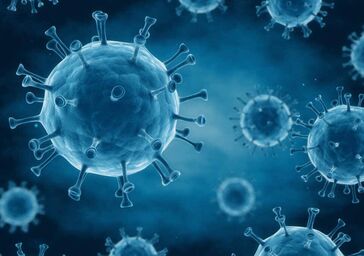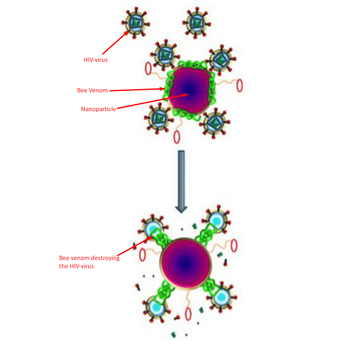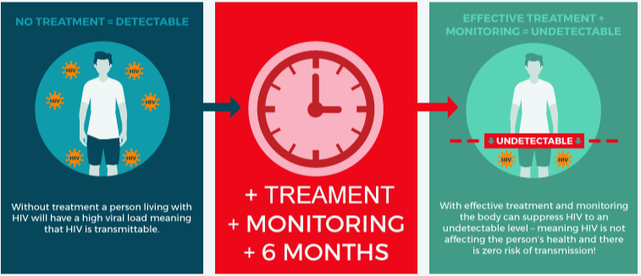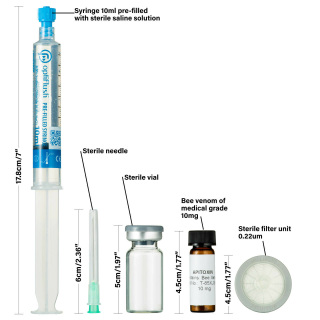HIV TREATMENT WITH BEE VENOM
Can bee venom be treat HIV?
WHAT IS HIV?
|
Let's start from the beginning. HIV is a virus. The name is an abbreviation and means Human Immunodeficiency Virus. In a person infected with HIV, the virus attacks and destroys the white blood cells called T cells or "helper cells". These cells play an important role in our immune system (the body's defense against diseases). The HIV virus thus destroys the immune system. The virus rapidly multiplies in the body while the immune system is weakened. It usually takes a long time from the time of infection until the person becomes seriously ill.
|
The course is different among different individuals, but it takes on average about ten years. The only sure way to know that you have HIV is through a HIV test. Without treatment, the immune system continues to deteriorate and the number of "helper cells" drops to very low levels, then the immune system can no longer do its job. Without treatment, HIV is contagious and can be transmitted to others.
When the immune system is damaged, various diseases that the body can otherwise protect can, for example, a severe pneumonia called Pneumocystis, a type of skin cancer called Kaposi's sarcoma and repeated fungal infections of the airways and esophagus. AIDS means having one or more of these severe diseases because the damaged immune system cannot counteract them.
Many people do not notice it at all, others may have symptoms similar to influenza or other viral infections, for example, fever, sore throat, swollen lymph nodes or skin rashes about 1 to 2 weeks after the infection. The only sure way to know if you have been infected with HIV is to test yourself. Testing is done with a blood sample.
HIV belongs to a group of viruses called lentivirus, "slow viruses". It means that the virus can "sleep" in the body's cells for a short or long time to suddenly wake up and start attacking the body's immune system. It is the HIV virus's ability to "hide" and to convert to new variants that make it so difficult to cure HIV and to make a vaccine that works.
When the immune system is damaged, various diseases that the body can otherwise protect can, for example, a severe pneumonia called Pneumocystis, a type of skin cancer called Kaposi's sarcoma and repeated fungal infections of the airways and esophagus. AIDS means having one or more of these severe diseases because the damaged immune system cannot counteract them.
Many people do not notice it at all, others may have symptoms similar to influenza or other viral infections, for example, fever, sore throat, swollen lymph nodes or skin rashes about 1 to 2 weeks after the infection. The only sure way to know if you have been infected with HIV is to test yourself. Testing is done with a blood sample.
HIV belongs to a group of viruses called lentivirus, "slow viruses". It means that the virus can "sleep" in the body's cells for a short or long time to suddenly wake up and start attacking the body's immune system. It is the HIV virus's ability to "hide" and to convert to new variants that make it so difficult to cure HIV and to make a vaccine that works.
HIV - HOME TEST KIT
This at-home test will check for the sexually transmitted infection HIV, all from the privacy of your own home. Your test results will tell you whether or not HIV1/HIV2 differentiation antibodies (Immunoglobulin G) and p24 antigen combination is present or absent. In the event that your test results are abnormal, you’ll have the opportunity to connect with our independent physician network at no additional cost to discuss your particular case. Order your test kit here! (Scroll down to the bottom of the page to find the kit)
BEE VENOM SHOWS GOOD EFFECT ON HIV IN STUDY
|
Melittin is the main component of bee venom. In the study the researchers Hood JL, Jallouck AP, Campbell N, Ratner L, and Wickline SA, found that bee venom on it's own have a positive effect on HIV as well. Why they use nanoparticles was to be able to use very high doses of melittin without risk of harming the bodies cells, for example the red blood cells.
From the article: "Nanoparticles loaded with bee venom kill HIV. Nanoparticles carrying a toxin found in bee venom can destroy human immunodeficiency virus (HIV) while leaving surrounding cells unharmed, researchers at Washington University School of Medicine in St. Louis have shown." |
Nanoparticles Loaded With Bee Venom (Melittin) Kill HIV
According to medical research carried out by the Washington University School of Medicine located in St. Louis, it has been found that a special toxin called melittin, accompanied with nanoparticles can effectively destroy HIV (human immunodeficiency virus) while having no negative effect on the surrounding cells. This finding has helped pave way for producing a vaginal gel that can prevent HIV from spreading, which eventually leads to AIDS.
Joshua L. Hood, Ph.D., who is a research instructor, has said that great hope has arisen for those regions where HIV has spread immensely, as people can now use the vaginal gel as an obstruction to stop the infection from spreading any further. This study has already been published in Antiviral Therapy – an International Medical Press.
Melittin, a potent toxin, found in bee venom can effectively destroy the protective shield that surrounds HIV. For this reason, a heavy dose of melittin is required to generate a required amount of damage. According to Samuel A. Wickline, senior author of the paper, melittin loaded nanoparticles are also extremely effective for killing tumor cells completely.
The fresh study shows that the melittin loaded nanoparticles do not cause any sort of harm to the surrounding cells. It is due to the reason that a protective bumper is added to a nanoparticle surface. Now what happens is that, when nanoparticles come in contact with any other normal cells, that can be larger, then these particles simply bounce away. HIV is smaller than the nanoparticles, so it makes it easier for HIV to fit between bumpers and make contact with nanoparticles, where the bee venom waits for it.
Hood also tells that the melittin present on nanoparticles fuses completely, in some time, with the viral envelope. After this fusion, it begins a pore-like attack to rupture the envelope completely, thus getting rid of the virus completely. This mechanism helps in getting rid of an essential part of the HIV structure.
On the other hand, other conventional drugs meant for treating HIV do not help control the virus from spreading. And due to this reason, even after a long term of using anti-HIV drugs, the virus manages to maintain its strains and reproduce later at any stage.
By using bee venom, an inherent physical trait of HIV is being attacked. HIV is a sturdy type of virus, as it has a protective coat and a double-layered membrane that surrounds it. That is why bee venom is the most suitable choice for treating complicated cases of HIV. The vaginal gel will serve as a potential means of protection for eliminating HIV. And using melittin with the nanoparticles, as a proper therapy, can help handle HIV infections that are quite complicated.
Nanoparticles can be administered intravenously, to clear HIV from the blood. One of the basic particles, that was used in this clinical study was manufactured several years ago and was regarded as an alternate blood product. It was noticed that it did not work well, as it hindered the supply of oxygen, but it circulated safely in the system. This provides a nice platform that can be used in the future to fight various infections.
As it has been noticed that melittin successfully attacks the double wall of the virus membrane hence, it means that it can easily handle other viruses that are similar to HIV. If we talk about hepatitis B and hepatitis C, it can be said that they have the same protective envelope type of structure. So, it means melittin loaded nanoparticles can be used to deal with them too.
This research does not tell anything about contraception. But according to Hood, the vaginal gel can also be used to target HIV and sperm as well. But in many cases, people will prefer protection from HIV only. This will eventually help those couples, who have HIV (any one of the partners), to conceive a baby at some stage. Nanoparticles are not harmful to sperm or the vaginal cells; they just want to attack the virus cells.
It has to be noted that no honey bees were harmed during this clinical study, as researchers made use of a non-natural form of bee venom. The entire work was carried out in a proper lab environment. Hood along with his research team has suggested that nanoparticles are not difficult to manufacture. They can be produced in large quantities and then used for clinical studies related to bee venom.
Cytolytic Nanoparticles Attenuate HIV-1 Infectivity
It was investigated if cytolytic melittin peptides can inhibit the HIV-1 infection when transported in a nanoparticle structure that can be used as topical vaginal virucide. Melittin loaded and free of melittin, nanoparticles were set up and evaluated for cytotoxicity and their ability to prevent contamination by CCR5 and CXCR4 tropic HIV-1 strains were judged.
The TZM-bl reporter cells that expressed luciferase under control of HIV-1 promoter were nurtured with the CCR5 (HIV-1 NLYU2) and CXCR4 (HIV-1 NLHX) viral strains and diverse doses of the soluble CD4 or free melittin to determine viability and infectivity.
Nanoparticles loaded with melittin were formulated in different doses and then tested against the VK2 vaginal epithelial cells. This was done to determine the viability of cells. Melittin loaded nanoparticles, based on the VK2 viability were assessed carefully for inhibition of the CCR5 (IC50 3.6 μM and IC90 11.4 μM) and CXCR4 (IC50 2.4 μM and IC90 6.9 μM) tropic HIV-1 viability and infectivity of the TZM-bl reporter cells. Centrifugation on a low speed was maintained to carry out the comparison between melittin loaded and free melittin, nanoparticles to capture the CCR5 (IC50 3.6 μM and IC90 11.4 μM) tropic HIV-1.
According to the clinical experiment done, soluble CD4 under positive control prevented CCR5 (IC50 3.6 μM and IC90 11.4 μM) and CXCR4 (IC50 2.4 μM and IC90 6.9 μM) tropic HIV-1 infectivity. The free melittin dose <2 µM was not cytotoxic and was highly effective for reducing the HIV-1 infection for both CCR5 (IC50 3.6 μM and IC90 11.4 μM) and CXCR4 (IC50 2.4 μM and IC90 6.9 μM) strains in the TZM-bl reporter cells. It was revealed that VK2 vaginal cell sustainability was unfavorably affected by all of the melittin free dose tests. On the other hand, VK2 cell viability did not show any traces of effects at different doses of the melittin loaded nanoparticles.
It can be said that melittin loaded nanoparticles significantly and safely decreased the CCR5 (IC50 3.6 μM and IC90 11.4 μM) and CXCR4 (IC50 2.4 μM and IC90 6.9 μM) strain infectivity of the TZM-bl reporter cells. Adding more, the melittin nanoparticles accumulated more HIV-1 than any other doses of melittin free nanoparticles.
Data gathered by the clinical examination presents a concrete proof for bee venom being a safe and therapeutic nanoparticle facilitated the prevention of the HIV-1 infectivity. However, further investigations are warranted to explore in-depth the antiviral prophylactic capability of the melittin nanoparticles that can thwart, disturb and capture initial infection in link with HIV-1 and other enveloped viruses
According to medical research carried out by the Washington University School of Medicine located in St. Louis, it has been found that a special toxin called melittin, accompanied with nanoparticles can effectively destroy HIV (human immunodeficiency virus) while having no negative effect on the surrounding cells. This finding has helped pave way for producing a vaginal gel that can prevent HIV from spreading, which eventually leads to AIDS.
Joshua L. Hood, Ph.D., who is a research instructor, has said that great hope has arisen for those regions where HIV has spread immensely, as people can now use the vaginal gel as an obstruction to stop the infection from spreading any further. This study has already been published in Antiviral Therapy – an International Medical Press.
Melittin, a potent toxin, found in bee venom can effectively destroy the protective shield that surrounds HIV. For this reason, a heavy dose of melittin is required to generate a required amount of damage. According to Samuel A. Wickline, senior author of the paper, melittin loaded nanoparticles are also extremely effective for killing tumor cells completely.
The fresh study shows that the melittin loaded nanoparticles do not cause any sort of harm to the surrounding cells. It is due to the reason that a protective bumper is added to a nanoparticle surface. Now what happens is that, when nanoparticles come in contact with any other normal cells, that can be larger, then these particles simply bounce away. HIV is smaller than the nanoparticles, so it makes it easier for HIV to fit between bumpers and make contact with nanoparticles, where the bee venom waits for it.
Hood also tells that the melittin present on nanoparticles fuses completely, in some time, with the viral envelope. After this fusion, it begins a pore-like attack to rupture the envelope completely, thus getting rid of the virus completely. This mechanism helps in getting rid of an essential part of the HIV structure.
On the other hand, other conventional drugs meant for treating HIV do not help control the virus from spreading. And due to this reason, even after a long term of using anti-HIV drugs, the virus manages to maintain its strains and reproduce later at any stage.
By using bee venom, an inherent physical trait of HIV is being attacked. HIV is a sturdy type of virus, as it has a protective coat and a double-layered membrane that surrounds it. That is why bee venom is the most suitable choice for treating complicated cases of HIV. The vaginal gel will serve as a potential means of protection for eliminating HIV. And using melittin with the nanoparticles, as a proper therapy, can help handle HIV infections that are quite complicated.
Nanoparticles can be administered intravenously, to clear HIV from the blood. One of the basic particles, that was used in this clinical study was manufactured several years ago and was regarded as an alternate blood product. It was noticed that it did not work well, as it hindered the supply of oxygen, but it circulated safely in the system. This provides a nice platform that can be used in the future to fight various infections.
As it has been noticed that melittin successfully attacks the double wall of the virus membrane hence, it means that it can easily handle other viruses that are similar to HIV. If we talk about hepatitis B and hepatitis C, it can be said that they have the same protective envelope type of structure. So, it means melittin loaded nanoparticles can be used to deal with them too.
This research does not tell anything about contraception. But according to Hood, the vaginal gel can also be used to target HIV and sperm as well. But in many cases, people will prefer protection from HIV only. This will eventually help those couples, who have HIV (any one of the partners), to conceive a baby at some stage. Nanoparticles are not harmful to sperm or the vaginal cells; they just want to attack the virus cells.
It has to be noted that no honey bees were harmed during this clinical study, as researchers made use of a non-natural form of bee venom. The entire work was carried out in a proper lab environment. Hood along with his research team has suggested that nanoparticles are not difficult to manufacture. They can be produced in large quantities and then used for clinical studies related to bee venom.
Cytolytic Nanoparticles Attenuate HIV-1 Infectivity
It was investigated if cytolytic melittin peptides can inhibit the HIV-1 infection when transported in a nanoparticle structure that can be used as topical vaginal virucide. Melittin loaded and free of melittin, nanoparticles were set up and evaluated for cytotoxicity and their ability to prevent contamination by CCR5 and CXCR4 tropic HIV-1 strains were judged.
The TZM-bl reporter cells that expressed luciferase under control of HIV-1 promoter were nurtured with the CCR5 (HIV-1 NLYU2) and CXCR4 (HIV-1 NLHX) viral strains and diverse doses of the soluble CD4 or free melittin to determine viability and infectivity.
Nanoparticles loaded with melittin were formulated in different doses and then tested against the VK2 vaginal epithelial cells. This was done to determine the viability of cells. Melittin loaded nanoparticles, based on the VK2 viability were assessed carefully for inhibition of the CCR5 (IC50 3.6 μM and IC90 11.4 μM) and CXCR4 (IC50 2.4 μM and IC90 6.9 μM) tropic HIV-1 viability and infectivity of the TZM-bl reporter cells. Centrifugation on a low speed was maintained to carry out the comparison between melittin loaded and free melittin, nanoparticles to capture the CCR5 (IC50 3.6 μM and IC90 11.4 μM) tropic HIV-1.
According to the clinical experiment done, soluble CD4 under positive control prevented CCR5 (IC50 3.6 μM and IC90 11.4 μM) and CXCR4 (IC50 2.4 μM and IC90 6.9 μM) tropic HIV-1 infectivity. The free melittin dose <2 µM was not cytotoxic and was highly effective for reducing the HIV-1 infection for both CCR5 (IC50 3.6 μM and IC90 11.4 μM) and CXCR4 (IC50 2.4 μM and IC90 6.9 μM) strains in the TZM-bl reporter cells. It was revealed that VK2 vaginal cell sustainability was unfavorably affected by all of the melittin free dose tests. On the other hand, VK2 cell viability did not show any traces of effects at different doses of the melittin loaded nanoparticles.
It can be said that melittin loaded nanoparticles significantly and safely decreased the CCR5 (IC50 3.6 μM and IC90 11.4 μM) and CXCR4 (IC50 2.4 μM and IC90 6.9 μM) strain infectivity of the TZM-bl reporter cells. Adding more, the melittin nanoparticles accumulated more HIV-1 than any other doses of melittin free nanoparticles.
Data gathered by the clinical examination presents a concrete proof for bee venom being a safe and therapeutic nanoparticle facilitated the prevention of the HIV-1 infectivity. However, further investigations are warranted to explore in-depth the antiviral prophylactic capability of the melittin nanoparticles that can thwart, disturb and capture initial infection in link with HIV-1 and other enveloped viruses
CONCLUSION
Doctors both in the USA and South Africa that have used bee venom solution to treat HIV positive patients report findings that confirms the researches in Washingtons results. Treatment with bee venom solution for a few months decreases the amount of HIV virus down to non-detectable levels. When the viral load is so low, there is no risk of transmitting the virus to others. This is the goal for all HIV antiretroviral drugs.
Conventional HIV medicine is very costly, and often comes with severe side effects that forces the users to stop using it. In the US the cost for a yearly treatment for HIV is around $30.000. A yearly treatment with bee venom solution is less than $600. Although the patients still needs to check their viral loads from time to time, but that goes for treatment with standardized antiretroviral drugs as well.
The bee venom treatment has few to none side effects and the cost is only a fraction. That means more people could get treatment without interruptions due to side effects or money related issues.
Conventional HIV medicine is very costly, and often comes with severe side effects that forces the users to stop using it. In the US the cost for a yearly treatment for HIV is around $30.000. A yearly treatment with bee venom solution is less than $600. Although the patients still needs to check their viral loads from time to time, but that goes for treatment with standardized antiretroviral drugs as well.
The bee venom treatment has few to none side effects and the cost is only a fraction. That means more people could get treatment without interruptions due to side effects or money related issues.
Sources:
Cytolytic nanoparticles attenuate HIV-1 infectivity
Nanoparticles loaded with bee venom (Melittin) kill HIV
Unconventional idea for antiviral contraceptive gel
Cytolytic nanoparticles attenuate HIV-1 infectivity
Nanoparticles loaded with bee venom (Melittin) kill HIV
Unconventional idea for antiviral contraceptive gel
WHAT DOES AN UNDETECTABLE VIRAL LOAD LOOK LIKE?
MAKE YOUR OWN BEE STINGS
Want an easy way to mix your own bee venom solution?
If so, this easy to use api-kit might interest you.
Get the users manual for free here
If so, this easy to use api-kit might interest you.
Get the users manual for free here
Bee Venom Solution Kit - For Bee Venom Therapy (BVT)
Suitable for: Lyme disease, arthritis, rheumatic treatment, chronic inflammatory diseases, bee venom desensitization, inflammatory diseases, and autoimmune diseases. See our research section for more information.
QUESTIONS ABOUT HIV & BEE VENOM
Why is it important to get checked regularly?
That is the reason, that doctors recommend timely checkups. It is also to be noted down that HIV is highly contagious and it can be easily transmitted to others. A weak immune system can offer no protection. For instance, if a person catches pneumocystis, which is a severe type of pneumonia, the remaining few white blood cells cannot confront them. In the same manner, a person suffering from HIV also becomes victim to other ailments like repeated infections of the esophagus, skin cancer, etc. When such types of multiple diseases, attack a person at one time the subject is known to be suffering from AIDS.
When to worry?
If you experience skin rashes, swollen lymph nodes, sore throat, fever or influenza quite repeatedly, it’s about time that you go through a thorough series of tests – with HIV test being the top priority. Frequent relapse of these viral infections suggests that there is something seriously wrong with the natural defense system of the body.
Why HIV is scary?
HIV is a slow-acting virus and that is why it is known as lentivirus. Such type of virus goes into hibernation, for a short or a long period, but can suddenly become active and attack white blood cells. HIV is one of the stealthiest types of a virus because it can easily hide and even convert to new alternatives. Thus, it makes it difficult to detect and cure HIV.
How does bee venom kill HIV cells?
Bee venom is loaded with several essential components that can deliver therapeutic effects. Melittin is one of the most prominent elements of honey bee venom. According to a study carried out by researchers Wickline SA, Ratner L, Campbell N, Jallouck AP, and Hood JL, it was established that bee venom certainly carries a positive effect that can finish the HIV. During the clinical study, high doses of melittin were used to strengthen the natural defense system and enable a molecular mechanism that will help detect and abolish HIV. It was observed that other cells of the body didn’t face any sort of side effects, like red blood cells.
To carry out the lab study, nanoparticles were used that were loaded with BV to destruct HIV. These nanoparticles contained the main ingredient of bee venom, melittin, which effectively killed the human immunodeficiency virus. During this experiment, no other cells received any sort of damage. This research was carried out at the Washington University School of Medicine.
Why bee venom is the popular remedy for HIV?
Bee venom has been used by South African and American doctors to treat patients suffering from HIV. Regular and controlled treatment of bee venom for several months helped in decreasing the intensity of HIV in the patients reported to be positive. When the virus starts dying it becomes difficult to even detect it through a proper HIV test and hence, the chance of transmitting it to others becomes zero.
Conventional medicines for treating HIV are very expensive and not only this, but they also have some serious side effects too. At one stage or another, the patient has to discontinue the expensive treatment. That is why it is important to establish some effective natural drugs that could address HIV. If we talk about the United States, the yearly cost for HIV treatment is around $30,000 (lower if an health insurance is available and take the cost) while the annual expense of bee venom treatment is only around $600.
What needs to be monitored?
Even while going through bee venom therapy for HIV, the patient needs to get checked for the viral load regularly. It is important to determine the progress and make bee venom dose adjustments accordingly. Another positive point of using bee venom for HIV is that it has little to nil side effects. This makes BV the best choice for treating HIV, as there is no trouble related to its charges and side effects.
Let us know about your own experiences of bee venom treatment for HIV or if you have any questions.
That is the reason, that doctors recommend timely checkups. It is also to be noted down that HIV is highly contagious and it can be easily transmitted to others. A weak immune system can offer no protection. For instance, if a person catches pneumocystis, which is a severe type of pneumonia, the remaining few white blood cells cannot confront them. In the same manner, a person suffering from HIV also becomes victim to other ailments like repeated infections of the esophagus, skin cancer, etc. When such types of multiple diseases, attack a person at one time the subject is known to be suffering from AIDS.
When to worry?
If you experience skin rashes, swollen lymph nodes, sore throat, fever or influenza quite repeatedly, it’s about time that you go through a thorough series of tests – with HIV test being the top priority. Frequent relapse of these viral infections suggests that there is something seriously wrong with the natural defense system of the body.
Why HIV is scary?
HIV is a slow-acting virus and that is why it is known as lentivirus. Such type of virus goes into hibernation, for a short or a long period, but can suddenly become active and attack white blood cells. HIV is one of the stealthiest types of a virus because it can easily hide and even convert to new alternatives. Thus, it makes it difficult to detect and cure HIV.
How does bee venom kill HIV cells?
Bee venom is loaded with several essential components that can deliver therapeutic effects. Melittin is one of the most prominent elements of honey bee venom. According to a study carried out by researchers Wickline SA, Ratner L, Campbell N, Jallouck AP, and Hood JL, it was established that bee venom certainly carries a positive effect that can finish the HIV. During the clinical study, high doses of melittin were used to strengthen the natural defense system and enable a molecular mechanism that will help detect and abolish HIV. It was observed that other cells of the body didn’t face any sort of side effects, like red blood cells.
To carry out the lab study, nanoparticles were used that were loaded with BV to destruct HIV. These nanoparticles contained the main ingredient of bee venom, melittin, which effectively killed the human immunodeficiency virus. During this experiment, no other cells received any sort of damage. This research was carried out at the Washington University School of Medicine.
Why bee venom is the popular remedy for HIV?
Bee venom has been used by South African and American doctors to treat patients suffering from HIV. Regular and controlled treatment of bee venom for several months helped in decreasing the intensity of HIV in the patients reported to be positive. When the virus starts dying it becomes difficult to even detect it through a proper HIV test and hence, the chance of transmitting it to others becomes zero.
Conventional medicines for treating HIV are very expensive and not only this, but they also have some serious side effects too. At one stage or another, the patient has to discontinue the expensive treatment. That is why it is important to establish some effective natural drugs that could address HIV. If we talk about the United States, the yearly cost for HIV treatment is around $30,000 (lower if an health insurance is available and take the cost) while the annual expense of bee venom treatment is only around $600.
What needs to be monitored?
Even while going through bee venom therapy for HIV, the patient needs to get checked for the viral load regularly. It is important to determine the progress and make bee venom dose adjustments accordingly. Another positive point of using bee venom for HIV is that it has little to nil side effects. This makes BV the best choice for treating HIV, as there is no trouble related to its charges and side effects.
Let us know about your own experiences of bee venom treatment for HIV or if you have any questions.






